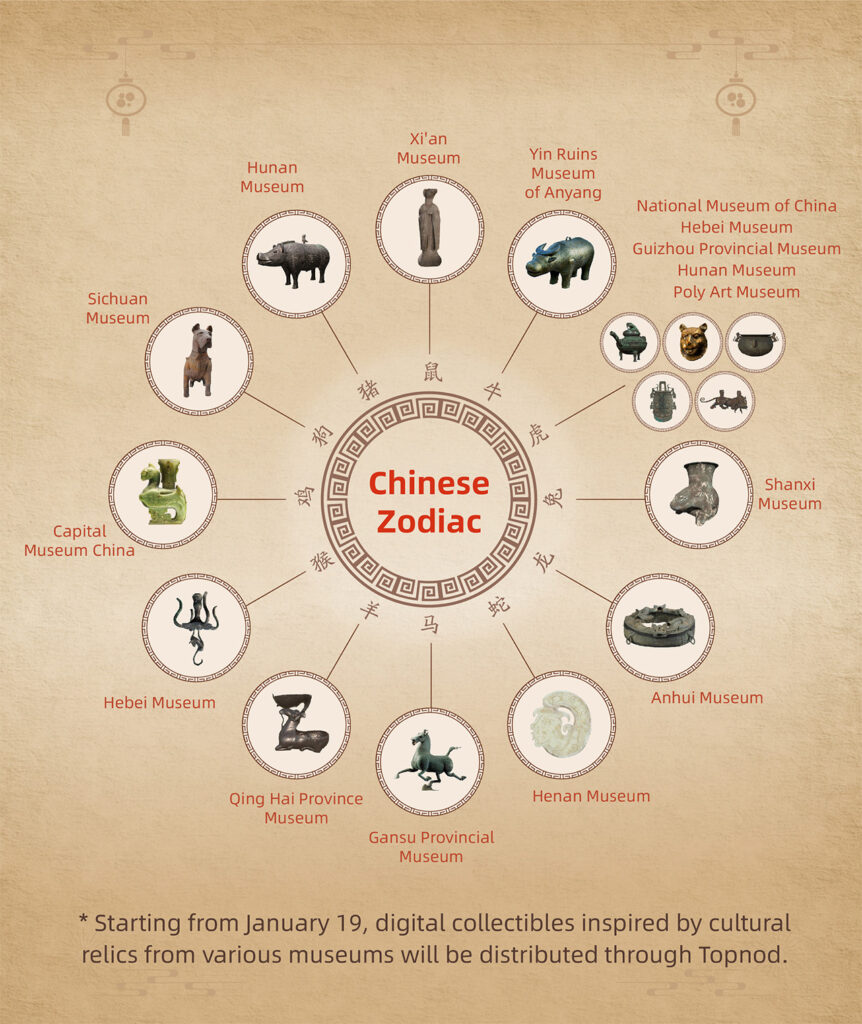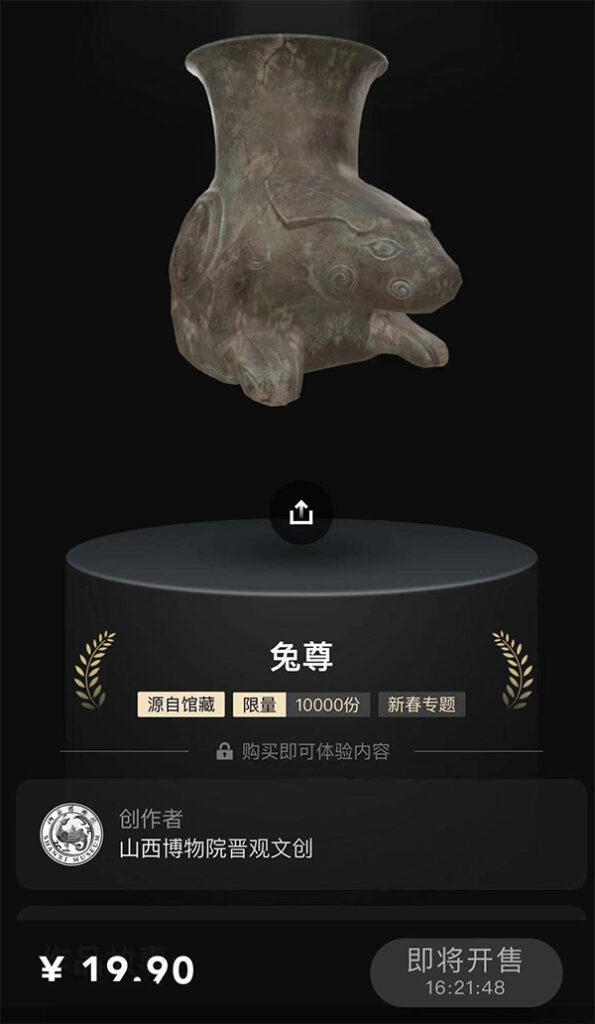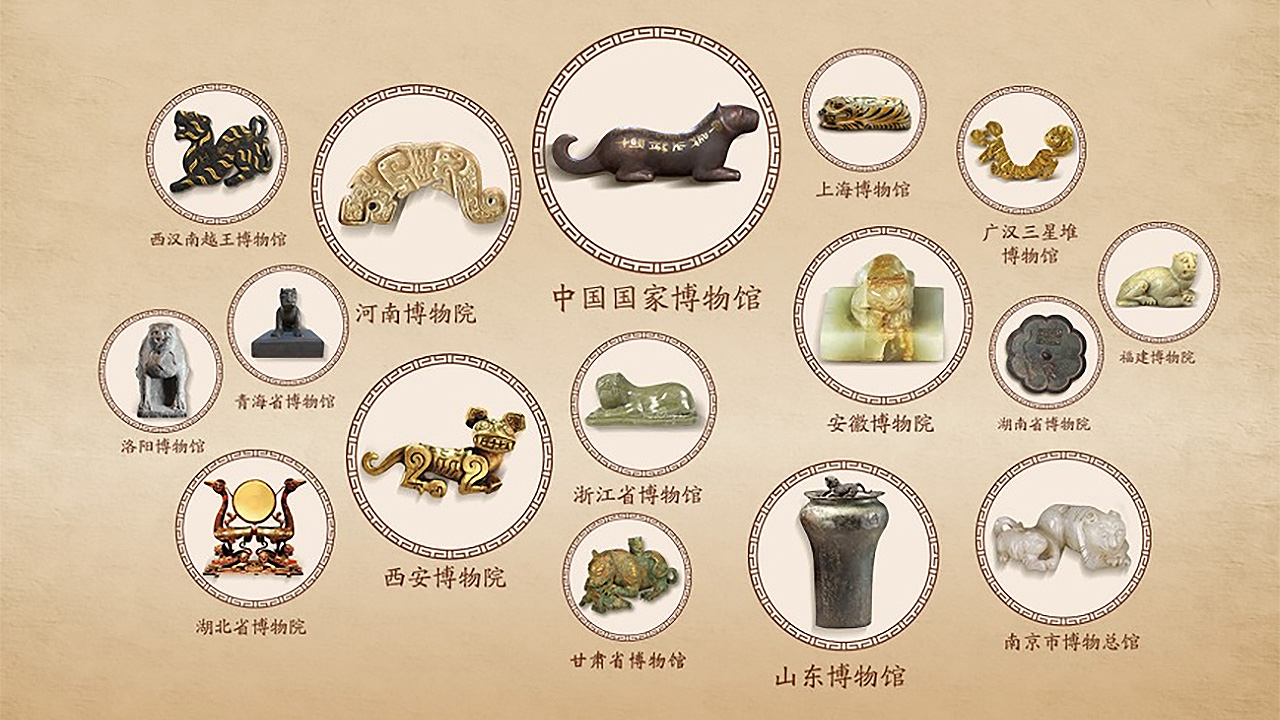Since 2016, Alipay has organized its annual Five Fortunes campaign to coincide with Chinese New Year, inviting Chinese audiences to collect virtual “fortune cards” issued by participating businesses and institutions. This year, Five Fortunes hasn’t just seen a growing number of participating museums, but has welcomed an injection of NFTs.
What happened

This year’s Five Fortunes campaign features NFTs such as a Chinese Zodiac collection, which presents digital editions of relics from museums including the Henan Museum, Anhui Museum, and Capita Museum China. Image: AntChain on Twitter
The seventh edition of Five Fortunes launched on January 19 with the participation of 21 Chinese institutions from the Palace Museum to the Henan Museum. Coinciding with the Year of the Tiger, as well as the country’s growing appreciation for cultural relics, the virtual fortunes released by these museums are naturally centered on tiger-themed artifacts. Using the Alipay app, users can scan relics at each museum to unlock the exclusive fortune cards, which include further information about the objects.
In particular, this year’s campaign marks the first time that the fortune cards can be used to redeem 3D digital collectibles on AntChain’s Topnod app. Using Ant Group’s blockchain technology, tiger-themed artifacts like a bronze tiger from Gansu Provincial Museum, a mother tiger and cub jade ornament from the Nanjing Museum, and a green jade tiger pendant from the Henan Museum have emerged as NFTs. Also featured is a Chinese Zodiac collection, presenting digital editions of relics from 24 museums including the National Museum of China and Anhui Museum.
Why it matters

A digital collectible from Shanxi Museum on the Topnod app. Image: Sohu
For Alipay and more broadly, its parent organization Ant Group, this year’s Five Fortunes campaign offers the opportunity to not just engage existing users, but develop its presence in the digital collectibles or NFT space. By participating with museums and riding the ongoing wenchuang wave, the company is further carving itself a cultural niche, potentially paving the way for future developments in the field.
For the museums who have released NFT editions of their artifacts, such an event serves to nudge cultural relics ever further into the virtual and crypto realm. Just as Henan Museum has done with its virtual blind boxes on Alipay, these digital collectibles communicate the history and significance of these artifacts to a younger audience, while representing a potential revenue stream.
For now, though, these Five Fortune NFTs are strictly regulated by government policies as much as Topnod’s control mechanisms. The platform requires real-name authentication, only supports exchanges with other eligible real-name users after 180 days, and does not allow any form of resale. Though NFTs and the metaverse have gained in popularity among audiences in China, the approach of tech companies such as Ant Group, Baidu, and Tencent remains cautious and conservative, even as their products and projects demonstrate a sophistication and readiness to grow the sector.
Translated by Min Chen



